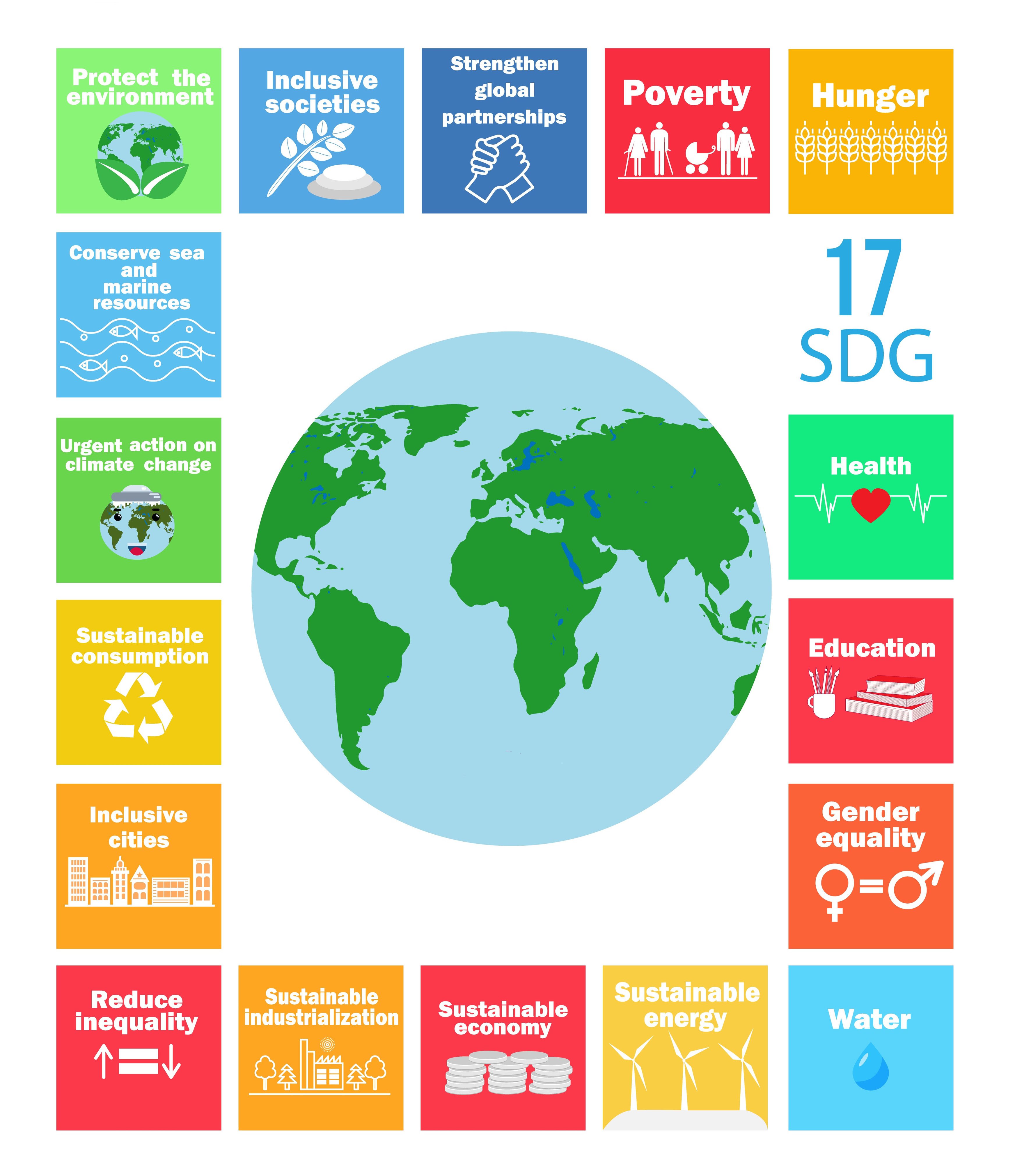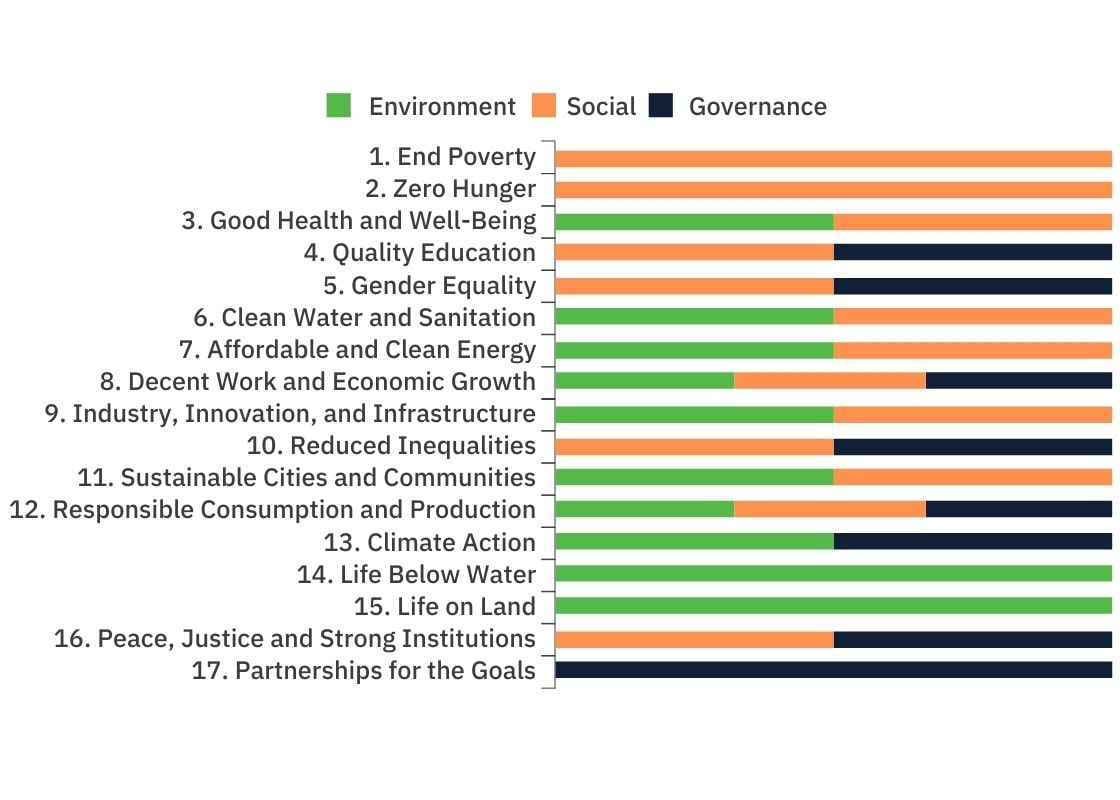What Are The 17 UN SDGs And Why Do They Matter For ESG?
The Millennium Development Goals established by the UN expired in 2015 and the program’s successor covers much more comprehensive and aggressive targets. The Sustainable Development Goals (SDGs) initiative sets forth 17 critical areas to solve economic, social, and environmental challenges by 2030.
All 193 Member States agreed to the “Agenda 2030”, calling on all businesses to actively and creatively be part of the solutions. While some of the goals directly fall under governments’ responsibility, the UN expects organizations large and small to take impactful steps to achieve success.
At a time when Environmental, Social, and Governance reporting is entering the strategic and operational agenda of more and more companies, the UN SDGs appear to be the best tools to use as a framework to improve ESG risk scores and secure long-term business performance. - Click To Tweet
What are those goals and why do they matter? Let’s dive in.
The 17 Sustainable Development Goals

1. End extreme poverty in all its forms, everywhere
The UN talks about extreme poverty when people have to survive with less than $1.25 per day. The targets include equal access to economic resources, rights to basic services, financial support, and efforts to reduce exposure to hardship.
2. End hunger and achieve food security
All people should have access to sufficient nutritious food every day. Reaching this goal will necessitate rethinking agriculture so it is more productive yet more sustainable, adapting to global warming by improving soil quality and protecting biodiversity.
3. Ensure health and well-being at all ages
The maternal mortality ratio may have dropped 38% between 2000 and 2017, but low to lower-income countries still amount to 94% of maternal deaths.[1]
The UN also deems deaths of infants and newborns too high, as are water-borne and communicable diseases. Other targets include preventable premature mortality, healthcare coverage, protection from hazardous chemicals and pollution.
4. Inclusive and equitable quality education
Access to education is still too much of a privilege for children and adults alike. This UN SDG aims to facilitate access to schools for young people and increase job or entrepreneurship opportunities for skilled adults, eliminating gender disparities and promoting education on sustainable development.
5. Achieve gender equality and empower all women and girls
This objective is to end discrimination against women and girls, including gender gaps in pay and employment/leadership opportunities. The organization estimates only 47% of working-age women were in the workforce in 2020, against 74% of men [2]. To date, no country has achieved gender equality.
The UN goal also addresses violence, domestic abuse, sex trafficking, and harmful cultural practices.
6. Ensure availability and sustainable management of water and sanitation for all
The UN hopes to achieve equitable access to drinking water, adequate sanitation and hygiene, improve water quality, improve water-use efficiency and protect and restore water-related ecosystems.
7. Ensure access to affordable, reliable, sustainable, and modern energy for all
Efforts shall be deployed to improve access to energy services, focusing on renewable energies and reducing energy waste across all sectors and populations.
8. Promote sustained, inclusive and sustainable economic growth, full and productive employment, and decent work for all
This sustainable development goal directly relates to economic productivity, supporting entrepreneurship and innovation, decreasing environmental degradation through more sustainable production and consumption. Targets such as eradicating child forced labor by 2025 and ending modern-day slavery are also included.
9. Build resilient infrastructure, promote inclusive and sustainable industrialization, and foster innovation
Some of the sub-goals of this SDG includes building quality infrastructure at the regional and trans-border levels, developing industrialization in poor countries, increasing access to financial services for small businesses, retrofitting industries toward cleaner technologies and processes, and increasing public and private scientific research spending.
10. Reduce inequality within and among countries
Actions should be taken to achieve income growth for the 40% of the population that are below the national average, to empower inclusion regardless of age, ethnicity, or religion, to eliminate discriminatory laws and policies, to improve regulation of global financial markets, and to facilitate people’s migration and mobility.
11. Make cities and human settlements inclusive, safe, resilient, and sustainable
This UN SDG aims to normalize access to affordable housing, sustainable transport systems, enhanced urban planning and management, and increase protection of cultural and natural heritage. Municipal services shall focus on air quality, green spaces, and waste management.
12. Ensure sustainable consumption and production patterns
This is a 10-year framework of programs toward more responsible consumption habits, efficient use of natural resources, and less food waste and food losses along the supply chain. The UN encourages companies to integrate sustainability into their processes and contribute to raising public awareness for sustainable development and lifestyles.
13. Take urgent action to combat climate change and its impacts
According to NASA, the current warming trend “is extremely likely (greater than 95% probability) to be the result of human activity since the mid-20th century and proceeding at a rate that is unprecedented over decades to millennia.”
For the United Nations, the solution is in strengthening our adaptative capacity to respond to climate-related events, integrating measures into national policies, and improving education on ways to mitigate risks and reduce adverse impacts.
14. Conserve and sustainably use the oceans, seas, and marine resources for sustainable development
This goal seeks to urgently reduce water pollution, protect marine and coastal ecosystems, regulate fishing and harvesting and fight illegal practices.
15. Protect, restore and promote sustainable use of terrestrial ecosystems, sustainably manage forests, combat desertification and halt and reverse land degradation, and halt biodiversity loss
A UN Global Assessment report reveals that around 1 million animal and plant species are threatened with extinction, some in the very near future.[3]
The SDG for life on land calls for urgent actions and global cooperation to increase reforestation, minimize soil erosion and protect species. This includes ending poaching and trafficking, and addressing illegal wildlife products trade.
16. Promote peaceful and inclusive societies for sustainable development, provide access to justice for all and build effective, accountable and inclusive institutions at all levels
The UN believes strong legislation is needed to reduce violence, end exploitation of children, reduce illegal arms flow and combat organized crime. Access to justice and protection of fundamental freedoms shall be equal for all.
17. Strengthen the means of implementation and revitalize the global partnership for sustainable development
Developing countries need support in the form of financial resources, debt relief and/or restructuring as well as investment in local ventures. They should also benefit from access to science and technology so they too can experience sustainable development.
The Sustainable Development Goals through the ESG Lens
With 169 specific targets, the SDGs present a wide range of opportunities for businesses to make a difference. The UN Sustainability Goals can be used to manage ESG reporting and create long-term financial value.
ESG-SDG map and examples of actions you can take:
 The initiatives that will make an impact on several of these goals can be implemented in conjunction with your efforts to increase supply chain transparency and accountability.
The initiatives that will make an impact on several of these goals can be implemented in conjunction with your efforts to increase supply chain transparency and accountability.
Implementing UN SDGs in your business could look like:
- Paying fair share of taxes in countries of operation and avoid tax evasion
- Including marginalized and underrepresented persons in the value chain
- Investing in communities
- Ensuring absence of slavery in the supply chain
- Paying fair prices to suppliers
- Practicing inclusion through corporate policies
- Disclosing GHG emission and climate risk exposure due to business activities
- Improving processes to reduce waste, including packaging and distribution
- Improving methods of production
- Educating and encouraging suppliers to adhere to strict standards
- Building domestic and global partnerships in healthcare, education programs, training, etc.
- Assessing and correcting gaps in resource use and waste procedures
- Revising internal policies to eliminate unintended bias and discrimination
- Developing female leadership programs
- Understanding the impact of business activities on natural resources, water and energy use
- Supporting new business models that can deliver clean/renewable energy
- Establishing sustainable procurement policies and supplier codes of conduct
- Promoting responsible consumption through marketing and PR events
- Sponsoring NGO initiatives to restore degraded habitats
By proactively participating in Agenda 2030, you are likely improving your ESG score and will identify new opportunities for growth and development.
How Is Your Business Doing With ESG?
In view of the 17 SDGs and your ESG reporting strategy, how well do you think you’re doing? Take our short 10-question ESG assessment based on the UN SDGs to reveal areas of improvement or realize you’re nailing the game.
[1] https://www.who.int/news-room/fact-sheets/detail/maternal-mortality
[2] https://worlds-women-2020-data-undesa.hub.arcgis.com/
[3] https://www.un.org/sustainabledevelopment/blog/2019/05/nature-decline-unprecedented-report/


.jpg)
